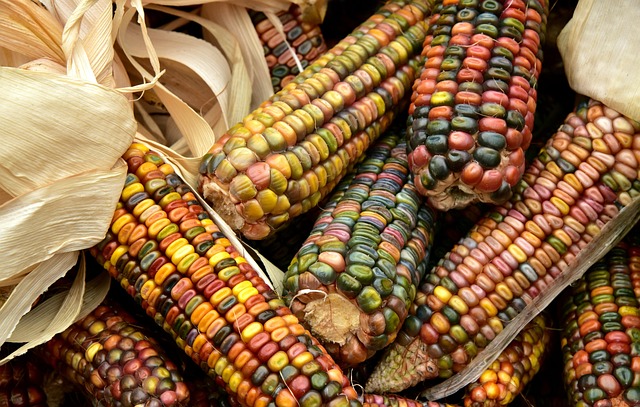The Green Frontier: Where Innovation Meets Agricultural Investment
In an era marked by rapid technological advancements and pressing environmental concerns, the agriculture sector finds itself at the crossroads of tradition and innovation. As the world population continues to rise, the demand for food intensifies, prompting a critical need for new agricultural practices and technologies. This article explores “The Green Frontier”—a concept that embodies the convergence of innovative ideas and agricultural investment, paving the way for sustainable and efficient farming practices that promise not only to increase productivity but also to protect the planet.
The Agricultural Landscape: An Overview
Agriculture has long been the backbone of human civilization, providing sustenance and livelihood for billions across the globe. However, the industry faces significant challenges in today’s world. Climate change, soil degradation, water scarcity, and the need for sustainable practices are pressing issues that require immediate attention. As agricultural land becomes increasingly scarce, innovative solutions are essential for meeting the growing food demands without further straining the environment.
The agricultural landscape has evolved significantly over the decades, shifting from traditional farming practices to more mechanized and technologically driven methods. This evolution has led to the emergence of smart farming, precision agriculture, and sustainable practices, which are not only aimed at enhancing productivity but also reducing the carbon footprint of farming activities.
The Role of Innovation in Agriculture
Innovation in agriculture encompasses a wide array of technologies and practices designed to improve efficiency, productivity, and sustainability. The integration of technology has revolutionized how farmers operate, introducing concepts such as:
- Precision Agriculture: Utilizing GPS, IoT devices, and data analytics, precision agriculture allows farmers to monitor and manage crop health in real-time, optimizing inputs like water and fertilizers.
- Biotechnology: Advances in genetic engineering and CRISPR technology have led to the development of crops that are more resilient to pests, diseases, and climate variations, thereby enhancing yield and sustainability.
- Vertical Farming: A method of growing crops in stacked layers, vertical farming maximizes space and resources, often employing hydroponics or aeroponics to reduce the need for soil and water.
- Agri-tech Startups: The rise of startups focusing on agricultural technologies has brought innovative solutions to the forefront, offering everything from mobile apps for farmers to advanced robotics for planting and harvesting.
Investment Trends in Agricultural Innovation
As technology reshapes the agricultural landscape, investment trends reflect a growing interest in sustainable and innovative farming solutions. Venture capital, private equity, and government funding are pouring into the agri-tech sector, signaling a strong belief in the potential for profit and positive societal impacts.
The surge in agricultural investment is driven by several factors:
- Increasing global population leading to heightened food demand.
- Heightened awareness of environmental issues and the need for sustainable practices.
- Technological advancements making it easier and cheaper to implement innovative solutions.
- Government policies encouraging sustainable practices and innovation through subsidies and grants.
These factors attract a diverse range of investors, from traditional agricultural stakeholders to tech-savvy venture capitalists. Programs aimed at fostering innovation, such as incubators and accelerators for agri-tech startups, are becoming more common, providing essential support to nascent companies looking to make their mark in the industry.
The Intersection of Sustainability and Profitability
One of the most significant challenges facing the agriculture sector is balancing profitability with sustainability. As investors increasingly demand socially responsible investments, the focus is shifting toward practices that not only generate financial returns but also contribute positively to the environment and society.
Innovative practices such as regenerative agriculture, which focuses on restoring soil health and biodiversity, are gaining traction among investors looking to align their portfolios with sustainable principles. By investing in practices that support ecosystem health, farmers can enhance their productivity while also contributing to climate change mitigation and biodiversity preservation.
Challenges in Implementing Innovative Agricultural Practices
Despite the promise of innovation, several challenges impede the widespread adoption of new agricultural technologies. These challenges include:
- Access to Technology: Many smallholder farmers lack access to cutting-edge technologies and the necessary infrastructure to implement them effectively.
- Education and Training: Farmers may not have the knowledge or skills required to utilize new technologies, necessitating significant investment in education and training programs.
- Financial Barriers: The high initial costs of adopting innovative practices can deter farmers, especially in developing regions where funds are scarce.
- Regulatory Challenges: Government policies and regulations may lag behind technological advancements, creating uncertainty for investors and entrepreneurs.
The Future of Agricultural Investment and Innovation
The future of agricultural investment and innovation is promising but requires a collaborative approach among various stakeholders. Governments, businesses, and non-profits must work together to create a supportive ecosystem that encourages innovation while ensuring that farmers are equipped to adopt new practices.
Investment in education, research, and infrastructure is critical for fostering a culture of innovation in agriculture. By providing farmers with access to knowledge, financial resources, and cutting-edge technology, we can empower them to become stewards of sustainable farming practices that enhance productivity while protecting the planet.
Conclusion
“The Green Frontier” represents a transformative opportunity at the intersection of innovation and agricultural investment. As the world confronts pressing food security and environmental challenges, the need for innovative practices and technologies has never been more urgent. Through collaboration, education, and investment in sustainable farming practices, we can march toward a greener, more sustainable future for generations to come.
In a world where agriculture must adapt to meet new realities, embracing the green frontier will not only ensure profitability but will also pave the way for a brighter and more sustainable future. The journey ahead may be fraught with challenges, but the opportunities for innovation in agriculture are boundless.


